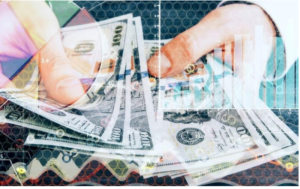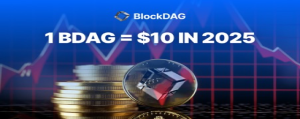3 Money Management Techniques to Boost Your Trading – Guest Editorial
FX and CFD brokerage AxiTrader look at how money management is often overlooked in the trading process and shares its view on techniques to this effect

In this Guest Editorial, the management team at AxiTrader look at technical aspects of importance in retail trading.
Money management is often an overlooked aspect of the trading process.
This is because most traders are focused on the what and when of trading.
If you look at it closely, you will notice that most traders want to know what instruments to trade? Which currency pair to trade? Which commodity to buy? Which market is moving?
And of course, we all want to know when we can get into a trade. Or when do we get out to take profit or to cut a loss.
There is no question that knowing the what and when of trading is important.
But knowing how to allocate the funds to each trade is critically important too.
And for many traders, not having a strategy of how you allocate your capital to each trade can spell the difference between success and failure.
Read More: 7 Dangers of Not Having a Money Management Plan When Trading
In this post, we will discuss 3 money management techniques that can boost your trading.
In the book ‘Technical Analysis of the Financial Markets’ author and technical analyst John Murphy talked about his transition from a research analyst to managing clients’ money and how he realised the importance of money management.
“I was amazed at the impact such things as the size of the account, allocation of funds and the amount of money committed to each trade could have on the final results,” he said.
So, what are the 3 money management techniques you can employ for your trading?
1. Allocation of funds
There’s no question there are almost unlimited trading opportunities in the markets.
Whether you’re talking about forex, commodities, equities, indices, futures and other markets, chances are you can find a trading opportunity that will suit your trading style.
Whether you’re a short-term day trader or long-term trend trader there will be numerous trading opportunities.
However, there is one thing that can stand in your way of taking advantage of the multitude of trading opportunities.
Your trading capital.
For many traders, starting with a small trading capital is the only way to get into the markets.
So, if you consider the almost unlimited trading opportunities and the limited trading capital, obviously something has to give.
This means you need to have a system of allocating your trading capital to each market you want to trade. In most cases, this may mean trading only in one or two markets at the most, even if there are many other markets you want to trade.
Allocation of funds is usually done on a high level – which means deciding which market you want to trade. Do you want to trade forex or commodities? Do you have enough capital to trade both of those markets?
While you definitely need to know what to trade, you also need to have a system on how much funds to allocate for each market you want to trade.
How to apply allocation of funds in your trading?
Let’s say you have a $10,000 trading capital. This may be too little if you want to trade every market like forex, commodities, indices or equities.
This is when you have to be selective. You need to make a decision on which market you want to trade.
After analysing the different markets, you decided to trade forex and commodities. By doing this you have narrowed down the markets and then you can allocate say $5,000 for each market.
Read More: How Much Capital Do You Need to Start Forex Trading?
2. Position sizing
Position sizing brings your allocation of funds to another level.
At its core, position sizing involves deciding how much to allocate per trade. How much risk you want to take per trade.
For example, you want to trade EUR/USD, USD/JPY and USD/CAD. Depending on the size of your trading capital and your previous experience in trading these forex pairs, you may want to allocate different amounts to each trade.
But Linda Raschke, a well-known commodities trader, said in an interview that her preferred way of position sizing is to use a standard lot or contract size per trade. This gives her a certain level of control and limits her exposure per trade.
For example, if you want to trade 3 different FX pairs, you may open 1 mini contract per each pair. And depending on the price movement of each pair, you can either cut the losses or ride the winners.
Position sizing is important as you can pre-set how much money you want to put on a specific trade.
How to apply position sizing
Following on the example from the allocation of funds above, you can use position sizing by allocating a certain amount per trade from the two lots of $5,000 you have decided to use to trade the forex and commodities markets.
For example, you can allocate say $1,000 to a EUR/USD trade, another $1,000 on a USD/JPY trade and another $1,000 to the USD/CAD trade.
For your commodities trades, you can do the same and allocate $1,000 to trade WTI Oil, another $1,000 to trade gold and another $1,000 to trade silver.
***Please keep in mind that these examples don’t take into consideration the margin level you will use on your trades. We have used dollar values only to simplify the examples.***
Read More: Top 4 Position Sizing Techniques to Boost Your Trading Experience
3. Use of stop-loss
Using stop-loss orders is the third component of a solid money management strategy you can use to boost your trading.
When you use a stop-loss order you’re drawing a line in the sand and limiting the amount of loss you want to take or to be exposed to.
Most trading platforms now have built-in stop-loss levels you can adjust to suit your trading style and risk profile.
The other important benefit of using a stop-loss order is you don’t have to sit and wait in front of your computer to monitor the price movements. Once you set your preferred stop loss level, most trading platforms will execute it once the level is hit.
Read More: 7 Exit Strategies Professional Traders Use
In conclusion, these are the 3 money management techniques you can use to boost your trading. If you haven’t incorporated them in your trading routine, it may be about time you do so and see the impact they will have on your trading results.
The information is not to be construed as a recommendation; or an offer to buy or sell; or the solicitation of an offer to buy or sell any security, financial product, or instrument; or to participate in any trading strategy. Readers should seek their own advice. Reproduction or redistribution of this information is not permitted.
Find out more at AxiTrader here.
The subject matter and the content of this article are solely the views of the author. FinanceFeeds does not bear any legal responsibility for the content of this article and they do not reflect the viewpoint of FinanceFeeds or its editorial staff.









